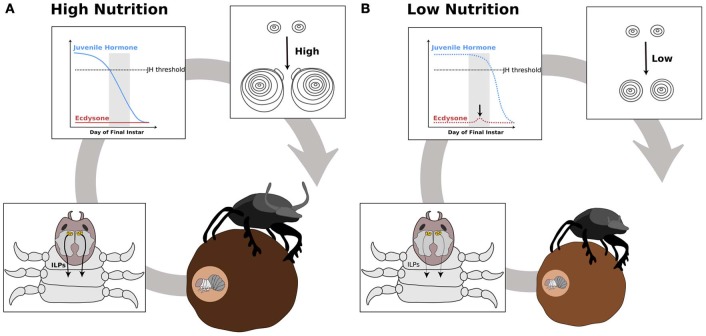Figure 5.
Hypothesis outlining the role of ecdysone and juvenile hormone in switching nutrition sensitivity in the developing horns of the dung beetle, Onthophagus taurus. Beetle horn growth depends on larval nutrition. In well-fed larvae (A), the secretion of insulin-like peptides (ILPs, curved black arrows) from the central nervous system (CNS) increases as the larvae feed (A′). At a critical stage near the end of the final instar (gray box), juvenile hormone (JH) concentration falls below threshold and ecdysone synthesis is not induced (A″). This results in high sensitivity to IIS/TOR signaling in the horn discs (A″′). As a consequence, the horn discs grow more relative to their body size (A″″). In poorly fed larvae (B), ILP secretion (black curved arrows) is low (B′). Thus, JH concentration remains high during the critical stage (B″). This high level of JH appears to trigger a small pulse of ecdysone (black arrow in B″), which leads to reduced IIS/TOR sensitivity in the horn disc (B″′). The horn discs grow slowly giving rise to a small pair of horns (B″″).

